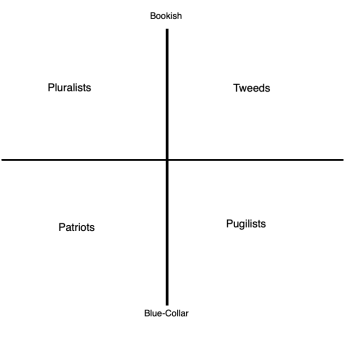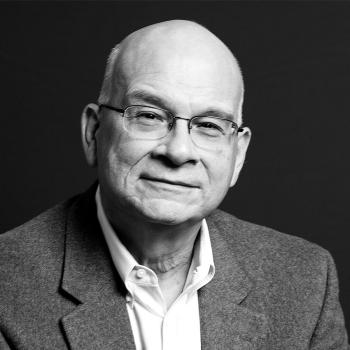 When I was working as a law clerk in the federal judiciary, I had the opportunity to tour FCI Seagoville, a low-security prison near the Dallas metro area. As I recall, one of the distinctives of the Seagoville facility was its emphasis on sex offender treatment—a topic I find particularly interesting given the various philosophical questions involved, such as whether and how desires as such can be changed. And as debates continue over Supreme Court nominee Judge Ketanji Brown Jackson’s sentencing practices in sex crimes cases, I’ve been thinking again over some of these issues, and doing a bit of background reading.
When I was working as a law clerk in the federal judiciary, I had the opportunity to tour FCI Seagoville, a low-security prison near the Dallas metro area. As I recall, one of the distinctives of the Seagoville facility was its emphasis on sex offender treatment—a topic I find particularly interesting given the various philosophical questions involved, such as whether and how desires as such can be changed. And as debates continue over Supreme Court nominee Judge Ketanji Brown Jackson’s sentencing practices in sex crimes cases, I’ve been thinking again over some of these issues, and doing a bit of background reading.
While I’m not sure if it’s the approach that FCI Seagoville uses, one of the best-known models of sex offender treatment is the “Good Lives Model” (GLM). As its proponents explain, “According to the GLM, people offend because they are attempting to secure some kind of valued outcome in their life. As such, offending is essentially the product of a desire for something that is inherently human and normal.”
One of the GLM’s foundational assumptions is “the basic premise that offenders, like all humans, value certain states of mind, personal characteristics, and experiences, which are defined in the GLM as primary goods.” And it’s the list of these “primary goods” that I find particularly intriguing:
- “life (including healthy living and functioning)
- knowledge (how well informed one feels about things that are important to them)
- excellence in play (hobbies and recreational pursuits)
- excellence in work (including mastery experiences)
- excellence in agency (autonomy, power and self-directedness)
- inner peace (freedom from emotional turmoil and stress)
- relatedness (including intimate, romantic, and familial relationships)
- community (connection to wider social groups)
- spirituality (in the broad sense of finding meaning and purpose in life)
- pleasure (feeling good in the here and now)
- creativity (expressing oneself through alternative forms).”
The list originally caught my attention because in the past, I’ve come across a strikingly similar breakdown of “primary goods” as reasons for action—albeit in a very different conceptual setting.
“New Natural Law Theory” is an approach to natural-law thinking typically associated with the work of philosophers Germain Grisez and John Finnis (some more recent proponents include Catholic scholars Robert George, Ryan Anderson, and Sherif Girgis). One of the chief aims of this project, as I understand it, was to make traditional arguments from natural law more intelligible in secular terms. And indeed, the distinctive claim of “New Natural Law Theory” (hereinafter “NNLT”) is that strictly speaking it requires no theistic postulates; instead, it simply stresses that human action is oriented toward the achievement of certain “basic goods,” each of which is desirable in itself and serves as a sufficient justification for action. These basic goods are, on Finnis’s account:
- Life
- Knowledge
- Friendship and sociability
- Play
- Aesthetic experience
- Practical reasonableness
- Religion
The parallels between this list of “basic goods” and the Good Lives Model’s list of “primary goods” are genuinely remarkable. “Life” and “knowledge” are both explicitly included; “spirituality” and “religion” are functionally synonymous, as are the pairs of “excellence in play” and “play,” “relatedness/community” and “friendship and sociability,” and “excellence in agency” and “practical reasonableness.” And “creativity” and “aesthetic experience” are, at the very least, analogously related.
What’s really surprising about this correlation between the GLM and NNLT accounts of goods, though, is the fact that nobody else seems to have noticed it. A quick search of the academic literature doesn’t appear to turn up any direct relationship between the GLM and NNLT, despite the fact that these two disciplines (offender rehabilitation and moral philosophy) are both relying on virtually the exact same ethical vocabulary. These two separate academic fields may simply have hit on the same core set of ideas.
What can be said about the fact that the fact that the GLM list of goods is more fulsome? That is, there are three primary goods on the GLM’s list that have no obvious correlates on Finnis’s list: work (in the sense of achievement of mastery), inner peace, and pleasure. Why might that be?
As far as “work” goes, in my experience it tends to be mostly Protestants who argue for a view of work as a source of joy, and not just a necessary evil (an orientation with which I personally resonate deeply, and that has led most Protestants throughout time to take a rather dim view of monastic life). So I’m not especially surprised that Finnis, as a Catholic, doesn’t place much of an accent on this element; there’s an incommensurable difference in theological perspective at work.
The latter two are harder to explain away—as a friend of mine pointed out to me several years ago, it doesn’t make much sense at all to exclude pleasure from the roster of basic goods unless one is loading the analytical dice. Human beings plainly act (or at least seem to act) “for the sake of” pleasure as an end in itself, and humans seek an experience of inner peace for the same reason (one might even hazard that “inner peace” is a subtype of the former).
In short, without getting too much into the weeds, I feel fairly comfortable positing that the GLM list of primary goods is more analytically useful than the NNLT list of basic goods. The GLM list, that is, brings a fuller-orbed conception of human flourishing to the fore.
I’ve written previously about what, in my assessment, are some of the limits of the NNLT paradigm, and I still agree with such criticisms. Most obviously, to identify basic goods as basic goods in the first place would seem, implicitly, to posit a unifying principle connecting them—some analogon to which the seven (or eleven) basic goods are related as analogates. That unifying principle, though, is what NNLT leaves ambiguous, in an effort to remain justifiable on the terms of something like Rawlsian “public reason.” And in the absence of such a metaphysical center that constitutes an evaluative criterion for what can possibly be a basic good, why shouldn’t pleasure count as a basic good? NNLT’s effort to elucidate a finite schema of basic goods always seems, to my mind, to be trapped on the horns of arbitrary narrowness and infinite iterability.
And beyond that, the uncanny resemblance between the GLM and NNLT models of “goods” suggests to me that NNLT as a system risks becoming—in lieu of a genuine way of “Being-in-the-world-virtuously”—a kind of technology of self-improvement. And indeed, in the sex offender treatment context, that is exactly what it is. The GLM approach is a theoretical mechanism for the remediation of a specific problem—the commission of sexual offenses—rather than a larger framework for approaching reality as such. Its orientation is immanent, not transcendent.
Conceiving of the moral life as the pursuit of a constellation of basic goods, whether aggregated or disaggregated, has always felt to me like something altogether different than conceiving of it as participation in and conformity to the Triune God—the Good as such, in whom I live and move and have my being—Who is always a reality that exceeds my categories of “basic-good-ness.” Speaking for myself, in seeking after a means of “Being-in-the-world-virtuously,” I do not undertake a kind of balancing test in which I think in terms of basic goods and their relationship one to another. Rather, I ask a simple question: “What would Jesus do?” That is certainly not to suggest that “anything goes”—my understanding of the person of Jesus is always informed and mediated by the Scripture that has historically come down to me through the church. But it is to stress the intrinsic unity of action embodied by the moral exemplar (Christ) to whom I seek to conform myself, and the relationship between that unity of action and its transcendent Paternal origin. To the extent that the “basic goods” have a place in this worldview, they are apprehended as facets of that one transcendent Source to which all things are oriented.
And that is the end, it seems to me, at which moral reasoning really ought to aim.












